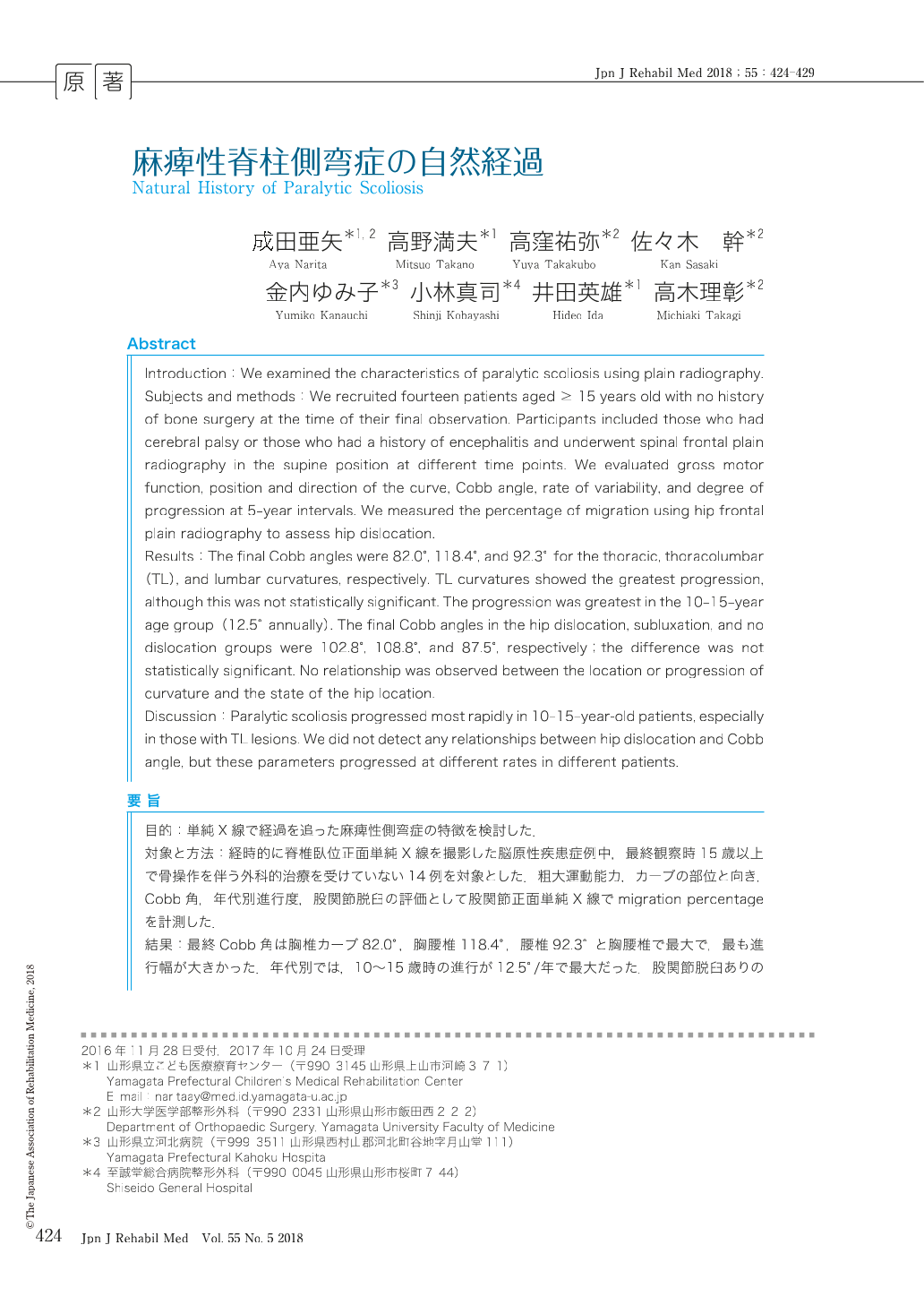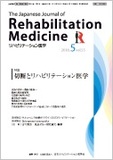Japanese
English
- 販売していません
- Abstract 文献概要
- 1ページ目 Look Inside
- 参考文献 Reference
要旨
目的:単純X線で経過を追った麻痺性側弯症の特徴を検討した.
対象と方法:経時的に脊椎臥位正面単純X線を撮影した脳原性疾患症例中,最終観察時15歳以上で骨操作を伴う外科的治療を受けていない14例を対象とした.粗大運動能力,カーブの部位と向き,Cobb角,年代別進行度,股関節脱臼の評価として股関節正面単純X線でmigration percentageを計測した.
結果:最終Cobb角は胸椎カーブ82.0°,胸腰椎118.4°,腰椎92.3°と胸腰椎で最大で,最も進行幅が大きかった.年代別では,10〜15歳時の進行が12.5°/年で最大だった.股関節脱臼ありの最終Cobb角102.8°,亜脱臼あり108.8°,脱臼なし87.5°で,脱臼の有無による違いはなかった.
考察:胸腰椎カーブが最も進行しやすく,特に10〜15歳時に増悪する.股関節脱臼と側弯のタイプ,角度の関連はなく,両者の経過もさまざまである.
Introduction : We examined the characteristics of paralytic scoliosis using plain radiography.
Subjects and methods : We recruited fourteen patients aged ≥ 15 years old with no history of bone surgery at the time of their final observation. Participants included those who had cerebral palsy or those who had a history of encephalitis and underwent spinal frontal plain radiography in the supine position at different time points. We evaluated gross motor function, position and direction of the curve, Cobb angle, rate of variability, and degree of progression at 5-year intervals. We measured the percentage of migration using hip frontal plain radiography to assess hip dislocation.
Results : The final Cobb angles were 82.0°, 118.4°, and 92.3°for the thoracic, thoracolumbar (TL), and lumbar curvatures, respectively. TL curvatures showed the greatest progression, although this was not statistically significant. The progression was greatest in the 10-15-year age group (12.5°annually). The final Cobb angles in the hip dislocation, subluxation, and no dislocation groups were 102.8°, 108.8°, and 87.5°, respectively;the difference was not statistically significant. No relationship was observed between the location or progression of curvature and the state of the hip location.
Discussion : Paralytic scoliosis progressed most rapidly in 10-15-year-old patients, especially in those with TL lesions. We did not detect any relationships between hip dislocation and Cobb angle, but these parameters progressed at different rates in different patients.

Copyright © 2018, The Japanese Association of Rehabilitation Medicine. All rights reserved.


